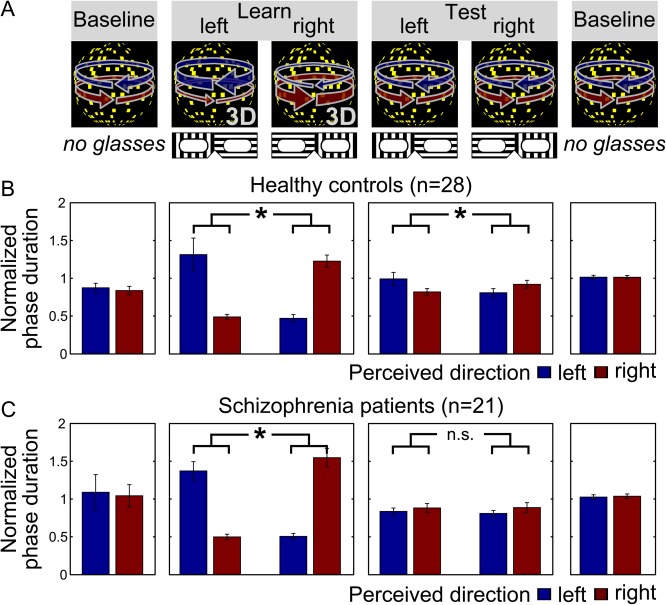Figure 1.

Behavioural effect of beliefs in healthy controls and schizophrenia patients. (A) Schematic illustration of the task. Higher‐level cognitive beliefs were induced by a placebo‐like experimental manipulation. During fMRI scanning, participants viewed a bistable stimulus that is alternately perceived as a sphere rotating to the right and a sphere rotating to the left, and indicated changes in perceived rotation direction by button presses. In the initial and final baseline phases, the rotation direction of the sphere was unbiased leading to comparable percept durations between right‐ and leftward rotation. In the learning phase, rotation direction was biased by stereoscopic depth cues but participants were made to believe that this bias was due to the glasses they were now wearing. In the test phase, participants retained their glasses and hence their beliefs about the prevalent motion direction, but were now presented with the unbiased sphere stimulus. (B + C) Effect of beliefs on perception in healthy controls and schizophrenia patients. In the learning phase, both controls (B) and patients (C) perceived the belief‐congruent percept for longer phase durations (P < 0.001 and P < 0.001, respectively, two‐sided paired t‐tests). Crucially, in the test phase, controls showed a significant difference between the belief‐congruent and belief‐incongruent percept (B, P = 0.04), whereas this effect of beliefs on perception was absent in patients (C, P = 0.79). Bars show the mean phase duration of each percept normalized with respect to the mean phase duration in the baseline runs. Error bars denote standard error. [Color figure can be viewed at http://wileyonlinelibrary.com]
